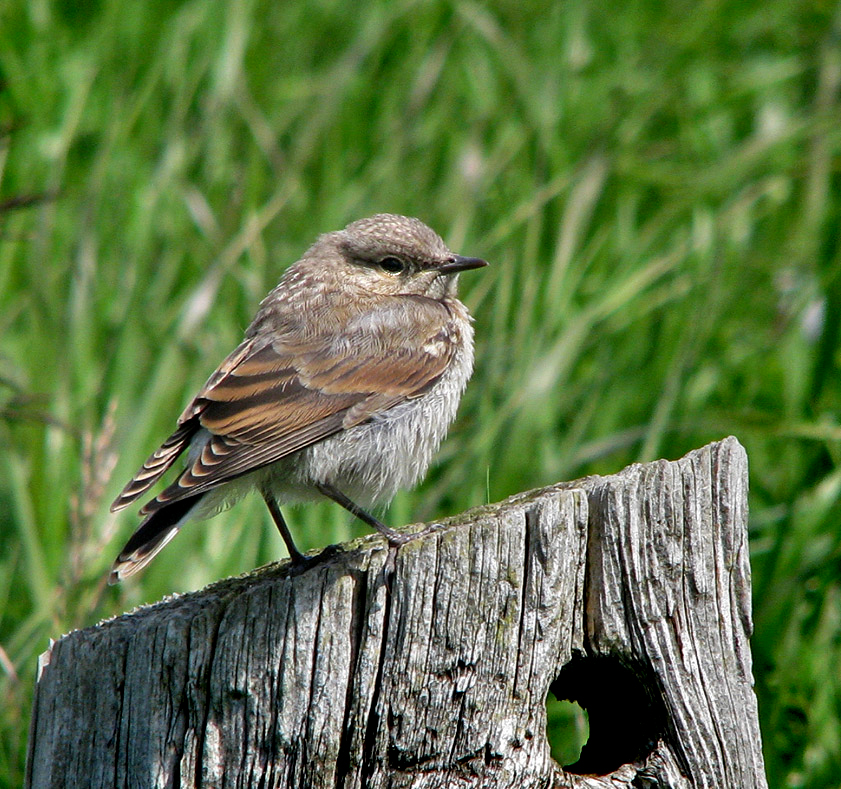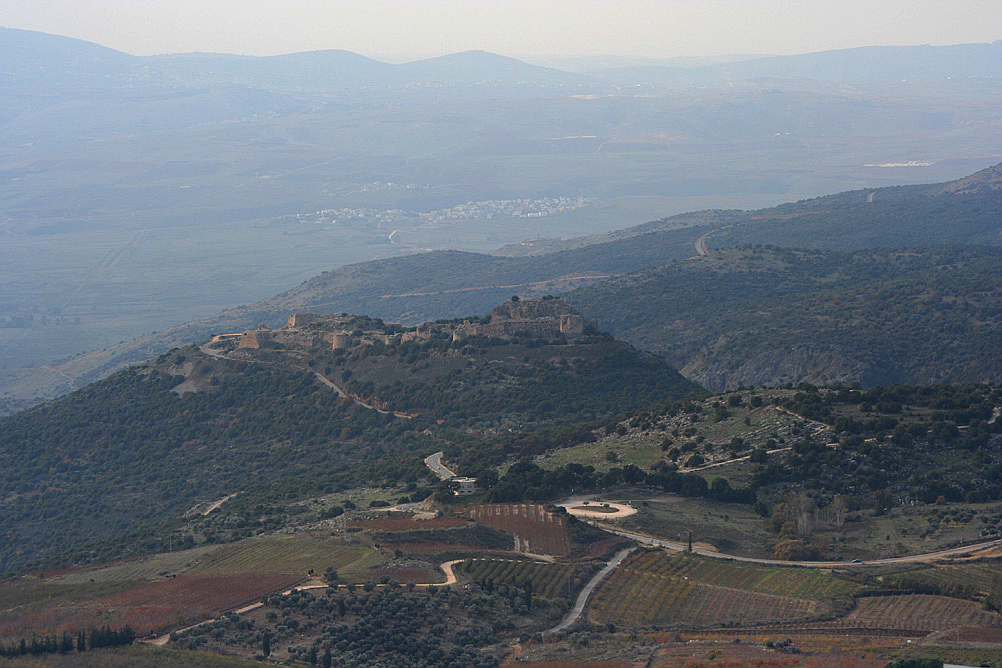|
Hermon Nature Reserve
Hermon nature reserve ( he, שמורת חרמון) is a nature reserve in the north of the Golan Heights. It includes an area in southern Mount Hermon which is located in the Israeli occupied portion of the Golan Heights. The reserve excludes the Mount Hermon ski resort, Neve Ativ and the Nimrod Fortress National Park. The total area of the reserve is approximately 78,270 dunam (19,340 acres). Flora and fauna The common birds in the reserve include white-throated robin, western rock nuthatch, sombre tit and northern wheatear. There are many species of butterflies, of which 23 are unique to the Hermon nature reserve and do not exist in pre-1967 Israel. The common reptiles in the reserve include the ''Vipera bornmuelleri'' and the four-lined snake. Due to the height of the mountain the growth and the blooming begins at the top of the mountain in August, instead of the spring. In 1905 the botanist Aaron Aaronsohn discovered what he called "the mother of wheat", ''Triticum dicoc ... [...More Info...] [...Related Items...] OR: [Wikipedia] [Google] [Baidu] |
Western Rock Nuthatch
The western rock nuthatch (''Sitta neumayer'') (sometimes known simply as rock nuthatch) is a small passerine bird which breeds from Croatia east through Greece and Turkey to Iran. This nuthatch is largely resident apart from some post-breeding dispersal. The eastern rock nuthatch ''Sitta tephronota'' is a separate species, which occurs further east in south-central Asia. The western rock nuthatch is a bird associated with habitats with bare rocks, especially in mountainous areas. Those at the highest altitudes may move lower down in winter. It feeds on insects and spiders in summer, supplemented with seeds and snails in winter. It feeds on the ground, and will wedge larger items in rock crevices while it hammers them open with its strong bill. It will also flycatch. The western rock nuthatch is 13.5 cm long, slightly smaller than Eurasian nuthatch, and has the typical nuthatch big head, short tail and powerful bill and feet. It is long-legged and long-billed compared to mo ... [...More Info...] [...Related Items...] OR: [Wikipedia] [Google] [Baidu] |
Triticum Dicoccoides
Emmer wheat or hulled wheat is a type of awned wheat. Emmer is a tetraploid (4''n'' = 4''x'' = 28 chromosomes). The domesticated types are ''Triticum turgidum'' subsp. ''dicoccum'' and ''Triticum turgidum ''conv.'' durum''. The wild plant is called ''Triticum turgidum'' subsp. ''dicoccoides''. The principal difference between the wild and the domestic is that the ripened seed head of the wild plant shatters and scatters the seed onto the ground, while in the domesticated emmer the seed head remains intact, thus making it easier for humans to harvest the grain. Along with einkorn wheat, emmer was one of the first crops domesticated in the Near East. It was widely cultivated in the ancient world, but is now a relict crop in mountainous regions of Europe and Asia. Emmer is considered a type of ''farro'' food especially in Italy. Taxonomy Strong similarities in morphology and genetics show that wild emmer (''Triticum dicoccoides'' Koern.) is the wild ancestor and a crop wild r ... [...More Info...] [...Related Items...] OR: [Wikipedia] [Google] [Baidu] |
Aaron Aaronsohn
Aaron Aaronsohn ( he, אהרון אהרנסון) (21 May 1876 – 15 May 1919) was a Jewish agronomist, botanist, and Zionist activist, who was born in Romania and lived most of his life in the Land of Israel, then part of the Ottoman Empire. Aaronsohn was the discoverer of emmer (''Triticum dicoccoides''), believed to be "the mother of wheat." He founded and was head of the NILI espionage network. Biography Aaron Aaronsohn was born in Bacău, Romania, and brought to Palestine, then part of the Turkish Ottoman Empire, at the age of six. His parents were among the founders of Zikhron Ya'akov, one of the pioneer Jewish agricultural settlements of the First Aliyah. He had two sisters, Sarah and Rivka.Spy, ... [...More Info...] [...Related Items...] OR: [Wikipedia] [Google] [Baidu] |
Elaphe Quatuorlineata
''Elaphe quatuorlineata'' (common names: four-lined snake, Bulgarian ratsnake) is a member of the family Colubridae. The four-lined snake is a non-venomous species and one of the largest of the European snakes. Description The species' common name refers to the markings seen on the body of adult snakes: four dark stripes running along a yellowish brown body. Juveniles, by contrast, have a dorsal series of dark brown blotches with alternating dark brown spots on the sides, all on a pale brown background. A black line runs from the corner of the eye and the belly is cream to white with darker markings. Adults can reach a length of , rarely . Adults are among the heaviest European snakes but are greatly variably in size, with males potentially weighing from and females potentially weighing from within the Aegean Islands. Distribution Four-lined snakes are found in Italy, along the whole western coast of the Balkan peninsula, in the western half of Greece and many of the Greek ... [...More Info...] [...Related Items...] OR: [Wikipedia] [Google] [Baidu] |
Vipera Bornmuelleri
The Lebanon viper (''Montivipera bornmuelleri''), also known as Bornmueller's viper, Mallow D, Ludwig D, Nilson G (2003). ''True Vipers: Natural History and Toxinology of Old World Vipers''. Malabar, Florida: Krieger Publishing Company. 359 pp. . is a species of venomous snake in the subfamily Viperinae of the family Viperidae. The species is native to Western Asia. www.reptile-database.org. There are no recognized subspecies. Etymology The specific name, ''bornmuelleri'', is in honor of German botanist Joseph Friedrich Nicolaus Bornmüller. Description ''M. bornmuelleri'' grows to a maximum total length (including tail) of about , but usually much less. Males tend to be larger than females in some populations. In specimens from Mount Lebanon, the maximum total lengths were for females and for males. The tail accounts for about 7–10% of the total length. Geographic range and habitat ''M. bornmuelleri'' is found in high mountain areas in Israel, Lebanon, and Syria. Its pref ... [...More Info...] [...Related Items...] OR: [Wikipedia] [Google] [Baidu] |
Northern Wheatear
The northern wheatear or wheatear (''Oenanthe oenanthe'') is a small passerine bird that was formerly classed as a member of the thrush family Turdidae, but is now more generally considered to be an Old World flycatcher, Muscicapidae. It is the most widespread member of the wheatear genus ''Oenanthe'' in Europe and North and Central Asia. The northern wheatear is a migratory insectivorous species breeding in open stony country in Europe and east across the Palearctic with footholds in northeastern Canada and Greenland as well as in northwestern Canada and Alaska. It nests in rock crevices and rabbit burrows. All birds spend most of their winter in Africa. Taxonomy and systematics The northern wheatear was first formally described by the Swedish naturalist Carl Linnaeus in 1758 in the 10th edition of his ''Systema Naturae'' as ''Motacilla oenanthe''. The species is now placed in the genus '' Oenanthe'' that was introduced by the French ornithologist Louis Jean Pierre Vieill ... [...More Info...] [...Related Items...] OR: [Wikipedia] [Google] [Baidu] |
Sombre Tit
The sombre tit (''Poecile lugubris'') is a member of the tit family found in southeast Europe and southwest Asia. Sombre tits occur in low density in thin woodlands at the elevation range between 1000 and 1600 metres above sea level. Similar to the other tit species, the sombre tit is a cavity-nesting species, which makes the nests in the holes in juniper, willow, poplar, and other relevant tree species. In some cases they nest in iron pipes (e.g. the ones used for orchard fencing), and in artificial nest-boxes. The clutch usually consists on 4 to 9 eggs, having two clutches per year. The species appear to be resident in the country with slight local movements. They breed on mountain slopes and in open deciduous forest; lower down on in trees and bushes in rocky terrain, as well as in fruit orchards. The breeding season lasts from early April till end of July - beginning of August. The food mainly consists on insects. Molecular phylogenetic studies have shown that the sombre tit ... [...More Info...] [...Related Items...] OR: [Wikipedia] [Google] [Baidu] |
White-throated Robin
The white-throated robin (''Irania gutturalis''), or irania, is a small, sexual dimorphism, sexually dimorphic, migratory passerine bird. The vernacular and genus name ''Irania'' alludes to Iran, its type locality (biology), type locality, while the specific name ''gutturalis'' is Medieval Latin for "of the throat". It breeds in western Asia and overwinters in East Africa. Relationships It was formerly classed as a member of the Thrush (bird), thrush family, Turdidae, but is now more generally considered to be an Old World flycatcher, family Muscicapidae. It, and similar passerine species, are often called chat (bird), chats. Description This species is larger than the European robin, having a length of and a wingspan of . The breeding male has lead-grey upperparts, a black face with a white throat and supercilium, and orange underparts. The tail is black, as is the strong bill. Females are plainer, mainly grey apart from a black tail, hints of orange on the flanks, and some wh ... [...More Info...] [...Related Items...] OR: [Wikipedia] [Google] [Baidu] |
Nature Reserve
A nature reserve (also known as a wildlife refuge, wildlife sanctuary, biosphere reserve or bioreserve, natural or nature preserve, or nature conservation area) is a protected area of importance for flora, fauna, or features of geological or other special interest, which is reserved and managed for purposes of conservation and to provide special opportunities for study or research. They may be designated by government institutions in some countries, or by private landowners, such as charities and research institutions. Nature reserves fall into different IUCN categories depending on the level of protection afforded by local laws. Normally it is more strictly protected than a nature park. Various jurisdictions may use other terminology, such as ecological protection area or private protected area in legislation and in official titles of the reserves. History Cultural practices that roughly equate to the establishment and maintenance of reserved areas for animals date bac ... [...More Info...] [...Related Items...] OR: [Wikipedia] [Google] [Baidu] |
Glaucium Oxylobum On Mt
''Glaucium'' (horned poppy) is a genus of about 25 species of annual, biennial or perennial herbaceous flowering plants in the family Papaveraceae, native to Europe, north Africa, and southwest and central Asia. The species commonly occur in saline habitats, including coasts and salt pans. List of species *''Glaucium acutidentatum'' *''Glaucium afghanicum'' *''Glaucium alakirensis'' *''Glaucium aleppicum'' *''Glaucium arabicum'' *''Glaucium calycinum'' *''Glaucium cappadocicum'' *''Glaucium contortuplicatum'' *''Glaucium corniculatum'', sea poppy *''Glaucium cuneatum'' *''Glaucium elbursium'' *''Glaucium elegans'' *''Glaucium fimbrilligerum'' *''Glaucium flavum'', yellow horned poppy *''Glaucium grandiflorum'', grand-flowered horned poppy *''Glaucium insigne'' *''Glaucium leiocarpum'' *''Glaucium mathiolifolium'' *''Glaucium oxylobum'' *''Glaucium quadratifolium'' *''Glaucium refractocarpum'' *''Glaucium secmenii'' *''Glaucium squamigerum'' *''Glaucium vitellinum'' *''Glaucium ya ... [...More Info...] [...Related Items...] OR: [Wikipedia] [Google] [Baidu] |
Nimrod Fortress
The Nimrod Fortress or Nimrod Castle ( ar, قلعة الصبيبة ''Qal'at al-Subeiba'', "Castle of the Large Cliff", later ''Qal'at Namrud'', "Nimrod's Castle"; he, מבצר נמרוד, ''Mivtzar Nimrod'', "Nimrod's Fortress") is a castle built by the Ayyubids and hugely enlarged by the Mamluks, situated on the southern slopes of Mount Hermon, on a ridge rising about 800 m (2600 feet) above sea level. It overlooks the Golan Heights and was built with the purpose of guarding a major access route to Damascus against armies coming from the west. Alternative forms and spellings include: ''Kal'at'' instead of '' Qal'at'', the prefix ''as-'' instead of ''al-'', and ''Subayba'', ''Subaybah'' and ''Subeibeh'' in place of ''Subeiba''. The area is under Israeli occupation and administration since 1967 together with the adjacent Golan Heights. The international community sees the area as Syrian territory. History According to geological observations and archaeological findings, the N ... [...More Info...] [...Related Items...] OR: [Wikipedia] [Google] [Baidu] |




